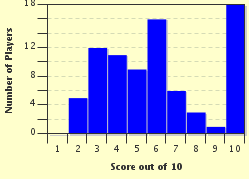Quiz Answer Key and Fun Facts
1. According to the myth, where did the Kraken live?
2. Though tales of Kraken-like sea creatures existed in ancient times, in which written work was the term 'kraken' first used?
3. Stories of the Kraken date back to the 12th century, though it wasn't called Kraken in early texts. The Orvar-Odds saga is a 13th century text that refers to two sea monsters, one of which was called the 'Lyngbakr'. What was the other monster called, which some believe refers to the Kraken?
4. In many tales of the Kraken, sailors often mistook it for what?
5. According to Erik Pontoppidan's account of the Kraken, fishermen would often fish above the monster.
6. Early accounts of the Kraken described it as more of a crab-like creature, but more modern accounts liken it to which animal?
7. Despite its deadly potential, what did the Bishop of Bergen say was the most dangerous thing about the Kraken?
8. Accounts of the Kraken's appearance varied greatly. The Bishop of Bergen, Erik Pontoppidan, described its arms as resembling those of which animal?
9. According the Greek mythology, Perseus fought the Kraken.
10. In 2011, paleontologist Mark McMenamin suggested that a Triassic period Kraken was responsible for the deaths of which ancient sea predator?
Source: Author
tiffanyram
This quiz was reviewed by FunTrivia editor
looney_tunes before going online.
Any errors found in FunTrivia content are routinely corrected through our feedback system.


